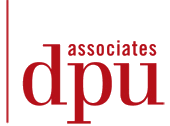
New Strategies for Savings and Loans Provision for Low-income Households (Diana Mitlin)
Submitted by frankie on Sat, 2008-01-12 08:04.
Diana Mitlin
The views expressed in 'Recent News & Reflections' are those of the author and do not necessarily reflect those of any of the governments, organisations or agencies with whom they have been working.
Diana Mitlin, who works at IIED, has been collaborating with Slum/Shack Dwellers International (SDI) to understand the contribution of Urban Poor Funds to SDI’s own work and the wider issue of financing shelter improvements.
Lending to low-income households for shelter improvements has had a bad press recently as the full consequences of sub-prime lending have been felt in the US financial markets and, through the scale of their impact there, on global capital markets. US lenders have sought to reach those low-income households who were seen as risky by conventional mortgage providers, creating an expanding sub-prime market by lending at higher interest rates to these high risk families. In some cases, lenders have been accused of deliberately encouraging default through high cost loans to very low-income households, but it is not clear that such abuse was widespread and in most cases, the lenders simply sought the repayment of the loans rather than to secure the asset through default. However, what is evident as the bottom has fallen out of the market is that the complex layers of financial intermediation encouraged lenders to take excessive risks and their bad judgement has been exposed. The Economist estimated in December 2007 that sub-prime mortgage borrowers in the US might default on $300 billion of loans (about one third of current sub-prime debt). In their search for profits, lenders assumed that financial markets could address the needs of those with very low-incomes. The scale of the disaster is such that governments have felt forced to intervene to prevent global recession; most recently in December central banks agreed to provide $500 billion of loan finance to ensure that banks had the liquidity they need and prevent the financial markets grinding to a halt.
The practice of putting away resources for the future is a common individual and household activity to minimise future risk and allow for the accumulation of resources. Loans also help households to accumulate assets; paying for goods as the same time as they benefit from the services that they secure through ownership. However, very low-income households in North and South have struggled to find modern institutions that are responsive to their need to save and borrow. Banks are often not present in low-income settlements; at best they are not interested, at worst they are anti-poor refusing entry to those without smart clothes, formal employment or other high income/high status indicators. Moreover, the market in finance, as in other goods, responds to scale; the best deals are available to those with the most money, those with cents are rarely provided for. And, as it evident from the sub-prime experience, when the market enters these people’s lives, its own profit objective is paramount and little attention is given to how risks for the borrowers can be minimised. In the US, sub-prime lending was virtually unknown ten years ago, it now accounts for just over 20 per cent of US mortgages and sub-prime loans are responsible for 55 per cent of foreclosures (repossessions). In the UK, sub-prime lending accounts now for about 8 per cent of UK mortgages; but sub-prime lenders are responsible for more than 70 per cent of all repossessions.
Savings and lending does not have to be organized according to the interests of the financial sector and commercial markets. The trans-national network, Shack Dwellers International (SDI), has shown the development agencies and national governments how savings and loans can be central to the fight against poverty. Community leaders, working with supportive professionals, have used savings as the bedrock of community organizations (savings schemes) that address the needs of the poor. Locally pooled savings provide capital funds that can lend to members for emergencies and small-scale income generation activities. As community leaders become experienced with lending and borrowing, they can help those members who have difficulties with repayments. These practices help savings schemes become better at managing money, establish practices of accountability, and understand how their scarce resources can be used to achieve a greater development impact.
SDI is a network of national Federations of the homeless and landless. These Federations are formed by the savings schemes that have been established by low-income families living in settlements throughout Asia and Africa. At present there are affiliate Federations in Brazil, Cambodia, India, Kenya, Malawi, Namibia, Nepal, the Philippines, South Africa, Sri Lanka, Tanzania, Thailand, Uganda, Zambia and Zimbabwe. The Federations, as grassroots organizations representing thousands of families, have political influence. They help savings schemes negotiate for access to land and services and, where they exist, they also help negotiate for access to housing subsidies.
To date, SDI affiliates have secured over 150,000 plots spread across 17 countries. In all cases, services have either been provided or are in the course of being provided. These numbers referred to formally transferred land and do not include the many thousands of other members who have been able to negotiate for greater tenure security and be allowed to stay on existing sites. Over 75,000 formal houses have been constructed, in most cases partially financed through state subsidies. The investment funds for these developments have been managed through SDI’s Urban Poor Funds. These Funds are capitalised by individual members contributions, international donor agencies and, in some countries, national governments.
The experiences with neighbourhood savings and loans are used when creating Urban Poor Funds; city or national loan funds which provide low-cost finance for the acquisition of land and services, and housing. Urban Poor Funds seek to reconcile the contradictions involved in offering loans to very low-income households. The locally based savings schemes help to identify households and ensure that they are not made more vulnerable by taking on debt. Their presence recognises both that loan finance is critical to development and that, in too many cases, such loan finance has been managed to benefit the lenders at the expense of the borrowers. The governance of loan institutions has to include, as central, the participation of the borrowers. Such borrowers need to participate (alongside staff and board members) in a reflective learning process to develop new practices to ensure that development does not exclude the lowest-income and most vulnerable households. For too long, financial institutions have been managed in the interests of those providing the capital. The consequence has been growing income and asset inequality. SDI’s affiliates are demonstrating an alternative practice in which financial markets learn new mechanisms and procedures, and help to address the needs of those who have been excluded from development opportunities. The sub-prime experience shows that the alternative is not prosperity; rather it is instability, insecurity and growing vulnerability for the vast majority of citizens.
